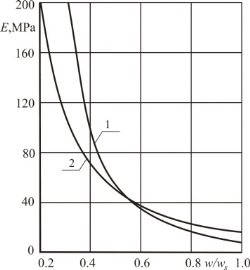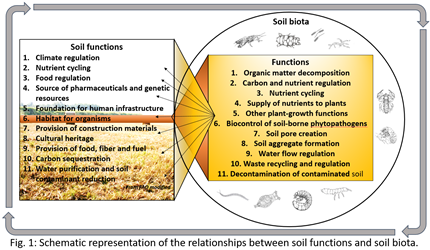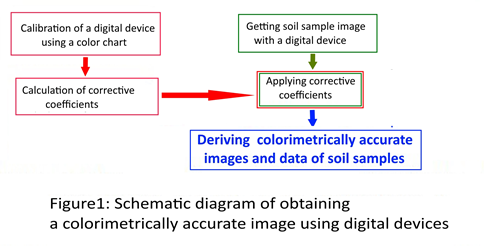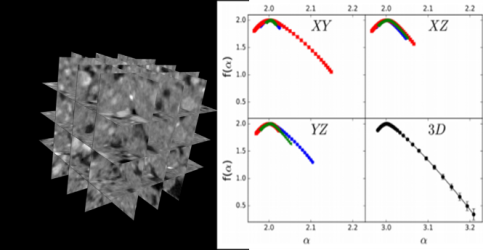Day 1 :
Keynote Forum
Kelly T Morgan
University of Florida, USA
Keynote: Irrigation management effect on water dynamics of citrus huanglongbing trees and soil
Time : 10:05-10:50

Biography:
Kelly T Morgan is a Professor of Crop Irrigation and Nutrient Management at the University of Florida. He has received his graduate degrees from the University of Florida in Soil and Water Science and Agricultural Engineering Departments. He has worked in University of Florida for 26 years specializing in improving water and nutrient use efficiency in the sandy soils of central and south Florida. His studies to assess nutrient application rates and irrigation management to increase nutrient use efficiency and minimize nutrient loss to the environment. He has published over 75 peer reviewed journal papers, 10 book chapters, and nearly 200 other publications.
Abstract:
Due to production declining and negative economic effects, there is an urgent need for strategies that reduce the impact of Huanglongbing (HLB) on citrus (Citrus x sinensis (L.) Osbeck). The objective of this study was to evaluate the impact of different irrigation schedules on soil volumetric water content (θv) and water uptake characteristics of citrus trees affected by HLB in central and southwest Florida. The study was conducted during two years on five-year-old sweet orange (Citrus x sinensis (L.) Osbeck) trees located in three commercial groves at Arcadia, Avon Park, and Immokalee, Florida. Three irrigation treatments included University of Florida, Institute of Food and Agricultural Sciences (UF/IFAS) recommendations, daily irrigation, and a schedule intermediate to the selected treatments and provided similar volumes of water per week based on ETo. Sap flow (SF), leaf area, leaf area index, and stem water potential (Ψ) were determined at selected intervals. Also, θv was measured using capacitance soil moisture sensors at incremental soil depths of 0-15, 15-30, and 30-45 cm. Significant differences (α=0.05) were found in average SF, leaf area index, Ψ, and θv measurements among treatments. Diurnal SF value under daily irrigation treatment increased by 91%, 51%, and 105% and θv under daily treatment increased by 39%, 13%, and 57% compared to UF/IFAS irrigation treatment in Arcadia, Avon Park and Immokalee, respectively. Results indicate that, daily irrigation improves trees water dynamics and greater mean soil water content than UF/IFAS or intermediate treatments and reduce trees stress with the same volume of irrigation water.
Keynote Forum
Vladimir I Andreev
NRU MGSU, Russia
Keynote: Stress state of a soil array at break of the pipeline
Time : 11:15-11:45

Biography:
Vladimir I Andreev is a Head of Department Strength of materials at National University Moscow State University of Civil Engineering. He is also an Professor, Doctor of Technical Sciences, full member of the Russian Academy of Architecture and Construction Sciences (RAASN), a member of UMO universities of Russia for education in the field of construction. He is an Honored Worker of Higher School, member of the Russian National Committee on Theoretical and Applied Mechanics and Honorary professor at the Warsaw University, honorary builder of Russia.
Abstract:
The rupture of water and sewer pipes leads to numerous accidents (subsidence, swelling, etc.). This is especially characteristic for clay, loess, peat and other soils. We consider the stress state of clay array at different models on fluid propagation from a fracture site. Accordingly, the problems are solved in cylindrical and spherical coordinates. The problem is solved by the methods of stationary and non-stationary moisture elasticity. The feature of the calculation is the accounting of the inhomogeneity of the clay during moistening. Figure 1 shows the dependence of the clay deformation modulus on moisture. Depending on the depth of the pipe where the fracture occurred, the ground pressure can be considered axisymmetric (large depth) and non-axisymmetric (small depth). Accordingly, one-dimensional and two-dimensional problems of moisture elasticity are considered. Analytical and numerical-analytical solutions are obtained. An analysis is made of the convergence of the Fourier series as a function of the number of terms in the series. As a result of calculations, it was found that taking into account the inhomogeneity caused by the change in the deformation properties of bodies leads to a significant change in the stress state of bodies compared to the calculation of homogeneous bodies. In clay soils, against the background of a marked reduction in the peaks of compressive stresses, the most dangerous maximum tensile stresses for a cylindrical model increase by 53%, and for a spherical stress increase by 38%.

- Soil Biology
Location: Madrid, Spain

Chair
Kelly T Morgan,
University of Florida,USA

Co-Chair
Nataliya P Kirillova
Moscow State University, Russia
Session Introduction
Cristina Menta
University of Parma, Italy
Title: Soil biodiversity: A pivotal element that sustains soil functions
Time : 11:45-12:10

Biography:
Cristina Menta is a Researcher in Soil Biology at Parma University, Italy. She obtained her PhD in Animal Biology, she is titular Professor of Zoology course at Parma University, and Scientific Director of the Natural History Museum of Parma University. She is coordinating as soil fauna expert and several research projects related to the characterization of soil fauna in natural and degraded areas. With her team, she has participated to the development of a new biological soil quality index (QBS-ar), based on soil micro-arthropod community, applied at international scale. She has published more than 50 papers in national and international scientific journal, chapters of book, and she has taken part in national and international congresses.
Abstract:
During the last century, soils have been over-exploited by industrial and agriculture developments in many parts of the world. Soils play a key role in the maintenance of ecosystem services and their preservation, in relation to human impacts and long-term processes induced by climate change, has become a priority topic. Besides the obvious implications for agro-sylvo-pastoral production, soils take part in the provision of other services such as carbon sequestration, nutrient cycling, protection of plants from pests, genetic resources, and other functions. A wide range of ecosystem services depends on soils and the functions performed by soil biota can have an impact at the global scale, with the consequences for global climate. The complex processes carried out by soil organisms have significant effects on ecosystem operation, soil quality, and yields and crops. The still in part unknown relationships between soil living community and ecosystem functions are extremely intricate and the study of these relationships is essential for understanding soil ecological functions and their ability to provide services. The need to adopt soil biodiversity monitoring programs is induced by both the increasing pressures on soil biodiversity and the limited knowledge obtained up to now. It is widely reported that the planet is currently losing biodiversity and it can be assumed that this process is occurring to the variety of organisms living in the soil. Finally, the increasing recognition of problems derived from soil degradation has contributed to identifying soil biota research as a priority in soil quality assessments.

- Soil Erosion
Location: Madrid, Spain
Session Introduction
Edwige Vannier
LATMOS, France
Title: Using digital elevation models and image processing to follow clod evolution under rainfall
Time : 12:10-12:35

Biography:
Edwige Vannier has her expertise in Data Analysis and Processing and her interest in Soil Science. Her research focuses on soil surface roughness characterization and modeling. She graduated from the Ecole Nationale Supérieur de l’Electronique et de ses Applications, France in 1997. She received her PhD degree in Biomedical Engineering from the University of Paris-Est Créteil in 2001. From 2003, she is an Assistant Professor at the University of Versailles-St Quentin.
Abstract:

- Soil Microbiology
Location: Madrid, Spain
Session Introduction
Yosef Steinberger
Bar-llan University, Israel
Title: Orchard floor management effect on soil microbial community
Time : 12:35-13:00

Biography:
Yosef Steinberger is a Professor of Ecology at Bar-Ilan University, Israel. One of his main interests is in the relationship of soil invertebrates and detrital food web structure to primary production in arid, semi-arid, and agroecosystems. Other interests include the monitoring of rangeland conditions (health), assessment of the success of rehabilitation efforts in disturbed rangelands and biological management of soil ecosystems for sustainable agriculture. He has supervised over 40 students in MSc, PhD, and Postdoctoral Fellows and has published over 200 publications in refereed journals.
Abstract:
Soil erosion by water is a major environmental threat to sustainability and productive capacity of agriculture. The previous study had shown that soil erosion harms crops because of a reduction in the availability of water, and thus brings damage to nutrients, organic matter that may affect soil biota community. The selection of a given practice in agriculture has key impacts on the soil functioning e.g. soil degradation processes, aggregate slaking and dispersion of clay particles, which then migrate and clog soil pores immediately beneath the surface. To overcome this essential threat, it is more and more common to mulch the soil in orchards and vineyards by plant and plants residue. In the previous study showed that inter-cropping reduced the runoff maximum discharge by 60-80%, reduced the cumulative runoff by 70-90%, and decreased soil erosion and runoff by 95%. Moreover, using native vegetation as a proxy of cover crops between the rows, we were able to increase both the herbs and arthropods biodiversity, and maintain the development and heath of the orchard trees. In the present preliminary study, the main objective was to assess the effect of different agricultural management practices (soil cover in an orchard) on soil microbial community structure evaluated as abundance, biomass, and functional diversity. Three different treatments were selected covering the orchard floor with: woodchips; annual winter cover crops and control (not cover). Thus, the application of different cover appears to be a sustainable management practice that enhances organic carbon, microbial biomass and activity and fungal abundances, thereby changing the microbial community structure. The present study had elucidated the importance of the interplay between soil cover and abiotic condition on soil microfloral community which during their activity may have a significant effect on nutrient supply improving yield potential.
Ming Pei You
University of Western Australia, Australia
Title: Critical factors driving soilborne root disease epidemics in clovers revealed and explained
Time : 14:00-14:25

Biography:
Ming Pei You has wide areas of expertise across soilborne fungal and oomycete pathogens, their aetiology, epidemiology, disease control by identification and application of host resistance and of cultural and chemical methodologies and in integrated disease management in relation to forages, broad-acre crops and horticultural crops. She also has conducted research in China on several fungal pathogens currently exotic to Australia. She has strong experience and understanding in pathogen epidemiological drivers, in fungal taxonomy, in defining the nature of soilborne complexes, particularly in relation to characterizing pathogen sub-specific variation within pathogen populations.
Abstract:

- Soil Water Management
Location: Madrid, Spain
Session Introduction
Peter W Sale
La Trobe University, Australia
Title: Harvesting rainfall in dense clay subsoils to increase yields of rain-fed crops
Time : 14:25-14:50

Biography:
Peter W Sale has carried out his research for over 30 years to address constraints that limit the productivity of farming systems in eastern and southern Australia. His initial work investigated slow-release P fertilizers for legume-based pastures and he became Lead Investigator in the National Reactive Phosphate Rock Project during the 1990s. Work on the form of applied P changed to the impact of P supply under abiotic stress, focusing on how pasture legumes under water deficit stress respond to P availability. Research then began on how to ameliorate subsoil constraints in cropping land in the Victorian high rainfall zone. This followed requests from grain producers who grew disappointing, low-yielding crops when dry periods occurred during the spring. Dense, dispersive clay subsoils, that restricted root growth and stored little plant-available water, were implicated. Research projects since 2005, on ameliorating these constraints, led to the development of the practice known as subsoil manuring.
Abstract:
Yields of managed agricultural crops relate directly to the soil water taken up by their roots and transpired through their leaves. The availability of this water for rain-fed crops depends on the rainfall and the soil’s ability to capture and store the rain for use by the crop. Unfortunately, there are many soils with dense impermeable clay subsoils that have limited capacity to capture and store rainfall. Past attempts to ameliorate these subsoils have failed. Field experiments were therefore carried out across the high rainfall zone (>500 mm annual rainfall) of Victoria, Australia with the aim of ameliorating the constraints posed by these subsoils. The key finding was that deep-banding of high rates of nutrient-rich organic amendment, into the dense, dispersive clay subsoil, a practice known as subsoil manuring, transformed the subsoil into a friable, aggregated soil. Pore-space and permeability increased after one crop and large, consistent and profitable increases in the yield of wheat and canola crops, were measured over four consecutive crops. The improved yields were associated with enhanced nutrient uptake and the increased use of subsoil water by the crops. Crop responses resulted when preceding rainfall was sufficient to replenish subsoil water and when one or more rainfall events occurred during the spring months, as crops filled their grain. The improvement in crop productivity is attributed to the increased capture and storage of rainfall in the subsoil, and its use by crops during their critical pre-flowering, flowering and grain-fill periods. Increased nutrient supply from the mineralizing organic amendment during these periods also contributed to the crop response. Soils with dense clay subsoils occur in many countries. They may well respond to this practice and grow more resilient and productive rain-fed crops, as rainfall becomes more variable.

Figure 1. Transformation of the physical structure of a dense, dispersive clay subsoil, four years after deep-banding 20 t/ha of nutrient-rich organic amendment, at a depth of 30-40 cm. Photos show untreated subsoil (left) and treated subsoil (right).
- Pedology
Location: Madrid, Spain
Session Introduction
Nataliya P Kirillova
Moscow State University, Russia
Title: Innovations in soil color characterization: From Munsell color charts to flatbed scanners and digital cameras
Time : 14:50-15:15

Biography:
Nataliya P Kirillova has her expertise in developing digital soil maps and evaluation of soil horizons color. Her match method (MM) was developed to create a digital fine-scale soil map and uses the indicative soil–landscape relationships. Accurate soil mapping relates to the correct classification based on soil horizons description. The study of the database that contains information on 800 profiles of the soils from the southern taiga subzone shows that more than 70% of the soil horizons are identified by color. That was the reason to develop the rapid and effective approaches for quantitative soil color evaluation.
Abstract:
Statement of the Problem: The physical characterization of soil horizons based on color is a key diagnostic method in the description of soil profiles, and has been integrated in to diagnostic keys such as the world reference base for soil resources. The Munsell color system has been the primary qualitative or semi-quantitative mean to describe soil color. The purpose of this study is to explore the feasibility of using flatbed scanners and digital cameras to derive colorimetrically accurate images and data of soil samples, and to replace semi-quantitative Munsell chart comparison, or more expensive spectrophotometers.
Methodology & Theoretical Orientation: Flatbed scanners have been used previously for colorimetric characterization of rocks and sediments. We undertook a series of calibration/characterization steps to optimize the colorimetric accuracy of two commercially available flatbed scanners and a digital camera. The basic principle underlying our approach is to characterise and calibrate digital devices using a variety of colour charts/targets. We tested the accuracy of these calibrations through analysis of a soil sample set containing 161 spectrophotometrically analyzed soils.
Conclusion & Significance: With careful calibration, scanners and digital cameras can be used to measure soil color with an accuracy close to that achievable with spectrophotometers, and hence to replace applying Munsell charts to evaluate soil color.

Lidija Galovic
Croatian Geological Survey, Croatia
Title: The composition of soils developed on different lithological units of the Medvednica Mt.
Time : 15:15-15:40

Biography:
Lidija Galović is an Geologist who started her scientific carrier as a Geochemist dealing with Environmental Geochemistry. She mainly focused on Mineralogy and Geochemistry of recent soils, she developed as a Paleosol Investigator with expertise in Geochemistry and Mineralogy of quaternary loess/paleosol sections in the Danubius area. Her interest spreads on studying other quaternary sediments as a PI of the Project “4425 Standardization and Applied Investigation of Quaternary Sediments in Croatia” funded by Croatian Science Foundation and as a team member of the project on the Review and Harmonization of the International Quaternary Map, scale 1:2.5 Million (IQUAME 2500), coordinated by BGR under the auspices of the CGMW (Commission of the Geological Map of the Word, Sub-Commission Europe) and with support of the International Association for Quaternary Research INQUA-SACCOM (Commission for Stratigraphy and Geochronology). Nowadays her focus is on lacustrine sediments/soils in the Dinaric karstic part of Croatia.
Abstract:
Methodology: Bedrock composition was defined using petrographic (thin sections) and chemical (major and trace element contents) analyses, whereas pedological, sedimentological and geochemical characteristics of six cross-sections were determined by chemical (major and trace element contents), mineralogical (modal analysis), and grain size analyses.
Findings: Soils developed on sedimentary bedrock (Mollic Rendzic Leptosols (Calcaric) and Albic Luvisol (Sceletic)) mostly originate from weathering of siliciclastic detritus that was exposed to oxidization before diagenesis. Furthermore, soils on metasiltstone, marble and lithothamnium limestone exhibit similar modal and geochemical composition and element distribution across the soil profile. In contrast, soils developed on igneous bedrock originate mostly from weathering of minerals of the first weathering cycle and thus abound with chemically less resistant minerals and less mobile elements. However, all profiles contain higher concentrations of lead with respect to bedrock, indicating airborne contamination.
Conclusion: Soils developed on the sedimentary rocks mostly originate from weathering of siliciclastic detritus that was exposed to oxidization before diagenesis of the bedrock. Thus, the soil was depleted in all chemical components that were unstable in subaerial conditions. After diagenesis, chemical composition of the soil did not alter substantially, or the changes were reversible. Therefore, soils on metasiltstone, marble and bioclastic calcarenite have similar modal and geochemical composition and element distribution in the soil profiles. As a contrast, soils developed on orthometamorphite bedrock originate mostly from the weathering of minerals of the first weathering cycle, which is why these contain chemically less resistant minerals and mobile elements.
Biography:
Iván G Torre is pursuing his third year of PhD in Physics of Complex Systems at Technical University of Madrid (UPM). He has a Predoctoral fellow with the Department of Applied Mathematics of UPM, Spain. He has been studying the structure of soil porosity in collaboration with the Group of Complex Systems of UPM and with the Research Center for the Management of Agricultural and Environmental Risks.
Abstract:
Fractal geometry has been increasingly applied to quantify soil structure using fractal parameters due to the complexity of the soil structure and thanks to the advances in computer technology. Mass dimension fractal analysis can be implemented in a binary image, which in general is displaying two phases: pore and solid. However, it has been shown that there is variability in the local porosity, which could be better studied using multifractal analysis (MFA). This type of study has been increasingly applied to quantify soil structure and is becomingly popular. We have applied two different techniques of MFA: box counting (BC) and gliding box (GB). The first one BC combines pixels to form larger, mutually exclusive boxes each containing a different set of pixels, while GB constructs samples by gliding a box of a certain size over the grid map in all possible directions. We show that there are some advantages and handicaps in both methods. From a CT-scan 3D image of a soil aggregate sample, three slices from each main direction have been selected. Then, for each slide we have computed using GB and BC, the mass function, the generalized dimension and the multifractal spectrum. All images analyzed presented a multiscaling character pointing out that the lower grey values are mainly influencing the scaling behaviour. The multiscaling nature of these images suggests using these algorithms as a basis to create synthetic images for testing thresholding algorithms.

Figure 1: On the left: visualization of some slices from the three main directions of the soil sample used in the study. On the right: Multifractal spectra of all the 2D slices (both above and lower left), and the 3D sample (lower right). Blue circles, red boxes and green triangles corresponds to different slices in each direction.
